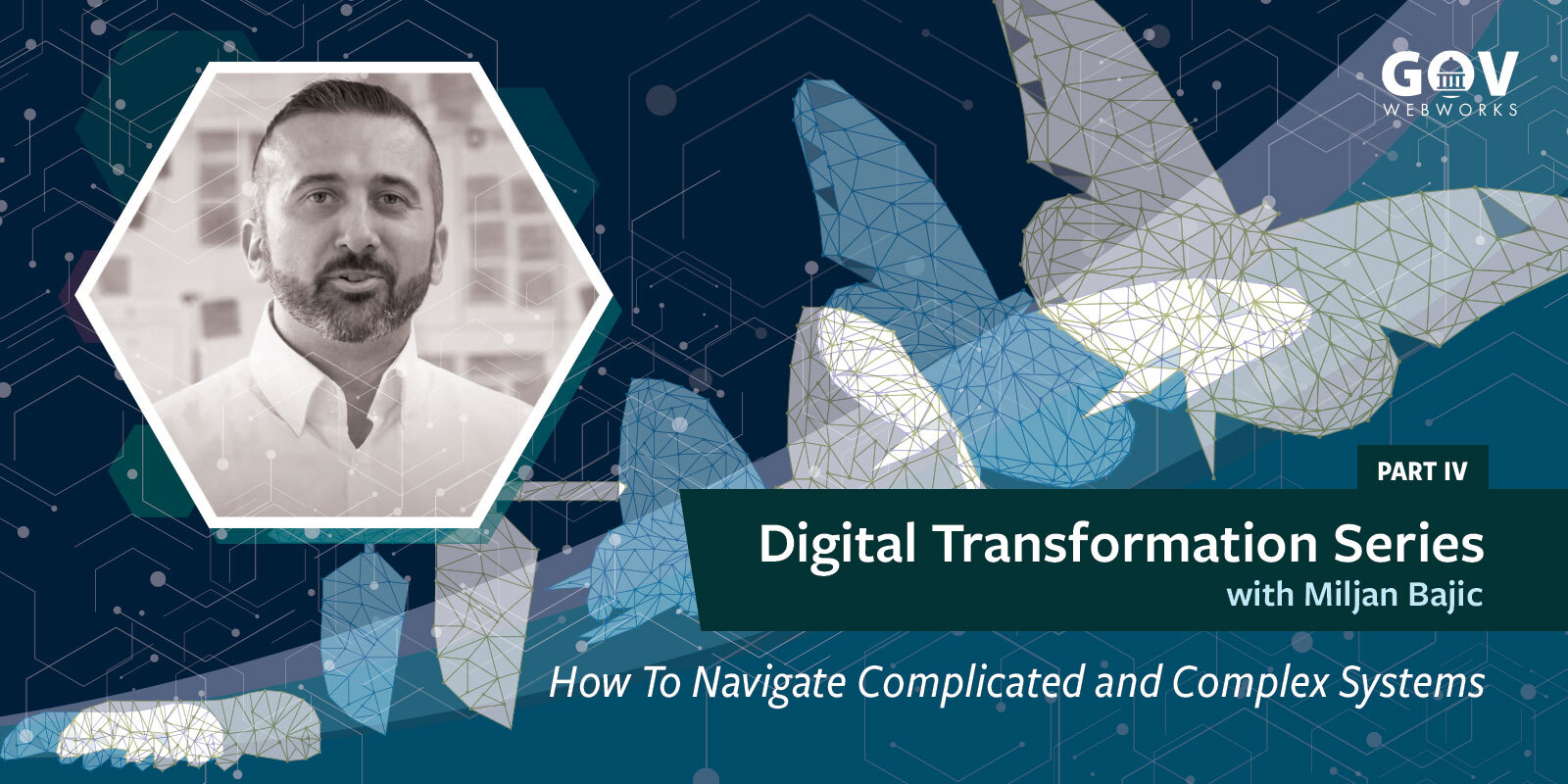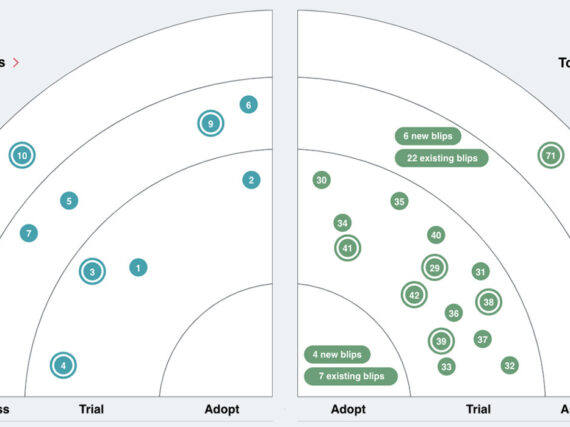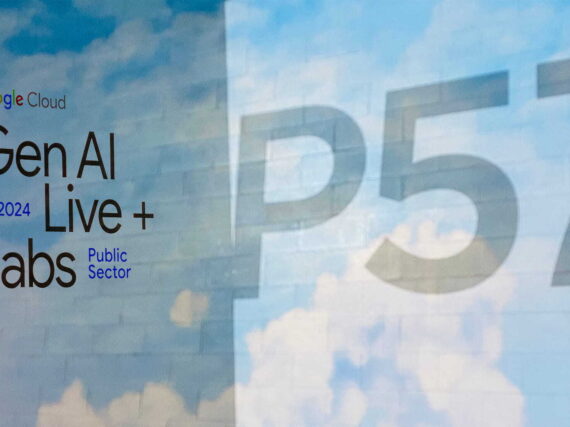To-may-to. To-mah-to. What’s in a word? Complex and complicated are two words often used interchangeably to describe those knotty problems that bedevil today’s business operations. Eligibility rules, system dependencies, office politics – they’re all things that can be described as complex or complicated and most people would know what you mean when you use those words.
However, within the world of digital transformation these words have two distinct meanings. One describes something which is difficult to understand initially but is ultimately knowable, and the other describes something harder to wrap our arms around because it is both dynamic and circumstantial.
“The distinction between complicated and complex can help us appreciate the challenges that organizations and people face today,” our change expert Miljan Bajic writes in his upcoming book, Wicked Leadership, due on Amazon in early 2021. “Without acknowledging this reality, projects are doomed to fail.”
In this final article in our Digital Transformation Series we are stepping back to consider the magnitude of the task facing today’s government leaders. By training key stakeholders to understand the forces at play as they relate to complicated versus complex systems, the teams guiding the process will stand a better chance of success.
Tackling the complicated and the complex
To look at these words more closely, the role of government can be described as complicated. Rules around eligibility, permitting, and licensing are all difficult to understand at first glance. But these rules are defined by laws and policies that can ultimately be made sense of, documented, and encapsulated in systems.
By contrast, government as an organization (either viewed as a whole, or at the department/office level) is described as complex. By complex we mean that it has many moving parts that all interact with each other differently, based on other factors, to produce an unpredictable array of outcomes.
Consider a pilot trying to land a plane on an aircraft carrier in pitching seas. The aircraft is complicated – made up of many parts that interact to create flight, but it is ultimately predictable in its response to input on the controls.
The rest of the scenario is complex and changing – the gusting wind, the waves, the direction of the ship and even the crew on deck. While the pilot can control the complicated nature of flying a plane, he or she can only anticipate and react to the complex nature of the weather and movement of the ship.
Digital transformation in government often resembles this pilot’s challenge, as leaders attempt to tackle both the complicated and the complex at once. They face rewriting labyrinthine legacy software in a dynamic environment with changing administrations and external and internal policy updates, all while also supporting day-to-day operations.
“Living systems are complex and behave in nonlinear ways that are difficult to predict,” Miljan says in his book. “Machines are complicated systems and behave in more predictable ways. Computers and machines can handle complicated problems better than humans. But they are not so well suited for complexity.”
Miljan recommends that in order to tackle the complicated, agencies must first tackle the complex. Traditional models of hierarchical leadership and linear project delivery are simply not up to the task. Just as the problems are dynamic, the response must also be dynamic. This involves leadership that can harness the collective knowledge and skills of the agency, and a flexible framework that can react to emerging conditions and information.
Agile to the rescue
Miljan was recently recruited to help the California Department of Motor Vehicles prepare to tackle some significant digital initiatives. As a large organization that interfaces with tens of thousands of California residents on a daily basis, the DMV had many “mission critical” systems that needed to be updated so the agency could better serve its customers.
Fortunately the department leadership was aware enough to recognize the complexity of their situation and know that it was not set up to tackle this work without significant support. A history of previous project failures clearly indicated that new tools and techniques would be required if different outcomes were to be achieved.
As we outlined in our California DMV case study, Miljan’s work with the agency ran the gamut from strategic to tactical. Initiatives included change management, performance measuring, estimating, and skill development. Before the current public health crisis interrupted modernization plans, the DMV was well on the way to adopting a new Agile culture and developing the skills needed to reconstruct their public-facing systems in a changing environment.
As Miljan notes, “Changing the organizational structure is the key to changing the culture and mindset.” Generally, product-based structures are more flexible and suitable in a dynamic or complex environment where organizations have to be adaptable.
During one discovery phase, Miljan guided the team to break down the DMV’s registration project into different types (motorcycles, cars, boats, etc). Miljan then guided the leadership team to define the new DMV architecture for the respective products. He further helped to support a pilot initiative with training and coaching for stakeholders.
“The important thing is to build internal capabilities so they can make their own changes and improvements,” Miljan noted. “The best chefs aren’t tied to recipes, but can work with the ingredients they have to create something delicious using different flavors. It’s about taking you from where you are, to where you want to go, using the skills you already have and whichever ingredients (tools) are needed like Scrum, Kanban, Scaled Agile, or a customized SAFe approach to get the job done.”
In other words, while the approach and methodology may need to evolve over time to fit the department’s needs and objectives, the goal remains to create a department which is more efficient and delivers better results.
Conclusion: Flexibility to bend, not break
A lot of agencies make the mistake of fixating upon the complicated, or things which can be controlled, without understanding the complexity, the uncontrollable elements, of their situation. As Miljan notes, by training and coaching key stakeholders, a department can better prepare for digital transformation by building chefs with internal capabilities to respond to the ever-changing array of complexity.
Inevitably, the best laid plans to tackle the complicated will be buffeted by unexpected complexities. A resilient organization can develop skills to bend in the face of these changes without having their projects blow away.
Many of the ideas we’ve talked about in the previous articles focus on the idea of making a series of small wagers, and banking the gains, rather than one big bet. By working incrementally, and transparently, and not overcommitting in terms of scope or budget, agencies can still make forward progress even in the most complex conditions.
To find out more about how our services can help support your own digital transformation journey, please get in touch.
Learn more
- Cracking the Code: Harnessing the Exponential Power of Technology, via Partnership for Public Service, a nonpartisan, nonprofit organization focused on making federal government more effective
- How to tell if a problem is complex or merely complicated, Humans are very good at linear thinking, but we can’t solve complex problems that way, via Fast Company
- Smart Leaders Know the Difference Between Complex and Complicated. Do You?, The default mindset of leaders sets them up for failure. This b-school professor explains how to fix it, via Inc







